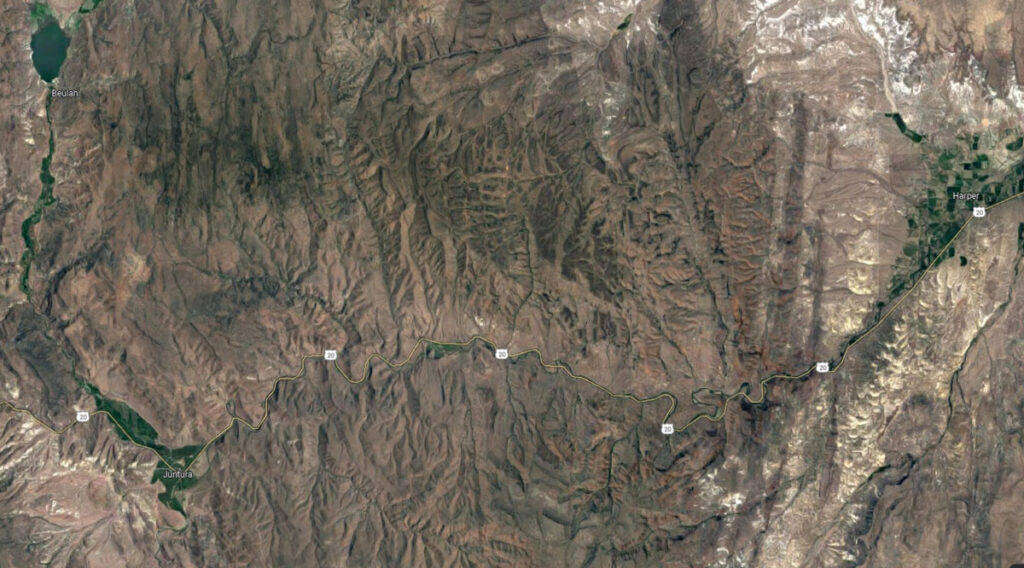In eastern Oregon, the Burns Paiute Tribe is leading an effort to make roads safer for drivers and deer
Most hunters in Oregon know the Malheur River and surrounding canyons offer great mule deer and chukar hunting. Most are also aware that US Highway 20 cuts right through the heart of prime deer winter range and has become a well-known hotspot for wildlife-vehicle collisions. Oregon Department of Transportation data shows that every year 3-5% of Oregon’s total recorded deer-vehicle collisions occur in the Malheur River Canyon as wildlife attempts to cross the highway to access seasonal and daily needs. The result is accidents that pose a major threat to human safety, ecosystem connectivity, and wildlife conservation. This level of mortality, particularly occurring in early winter and spring, has significant implications for the sustainability of deer populations that use the area for winter range and fawning grounds.
Thankfully, the Burns Paiute Tribe is leading a multi-year comprehensive effort with TRCP, local landowners, elected officials, and other partners to reduce the habitat fragmentation and deer mortality caused by Highway 20. Healthy populations of mule deer are important to the Tribe, which manages a Wildlife Mitigation Site that is bisected by the highway. In 2020, the Burns Paiute Tribe published a blog in collaboration with TRCP that detailed the problem the highway poses to mule deer and the ongoing research to study the movements of mule deer in the canyon and their patterns on and across the highway.
Since 2020, the Tribe and partners have had several successes to advance connectivity in the canyon and the coalition.

New Funding Means Good Work Ahead
The Oregon State Legislature, led by Representative Ken Helm (D, House District 27), passed bills allocating $7 million (2021) and $5 million (2023) for wildlife crossing projects in Oregon. A portion of these funds have been set aside for funding future wildlife crossings design and construction in the canyon.
In 2021, the Burns Paiute Tribe contracted a consulting firm to complete the “Highway 20 Wildlife Connectivity Feasibility Study” to better understand critical issues and the variety of challenges related to wildlife connectivity documented along this corridor. In June 2022, the Tribe hosted a community forum in Juntura, with support from Oregon Solutions, to gauge public perceptions about the issues and to determine if the local community members were interested and ready to collaborate. At a Wildlife Passage Summit in Burns in September 2022, presentations were shared with a broader range of stakeholders and relevant agencies about the current research, data, and information collected to date.
Additionally, in 2023, the Oregon Department of Fish and Wildlife, in cooperation with the Tribe, used Pittman-Robertson funds and commissioned another report by well-known wildlife crossing expert Dr. Marcel Huijser with the Western Transportation Institute. The report details potential future mitigation measures that would reduce collisions while maintaining permeability for wildlife.
During the winter months, many deer cross the highway regularly. However, some mule deer will winter further south, and these animals may only cross US Hwy 20 twice per year, once during spring migration and once during fall migration. The location data from 10 individual mule deer were used in the report to calculate the diameter of the winter home ranges (Figure 2). Based on the diameter of the home range of mule deer that winter along both sides of the highway, a suitable crossing structure would be needed every 1.04 miles to allow 50% of the mule deer to access at least one suitable structure.
The report also indicates the design specifications for wildlife fences, crossing structures, wildlife jump-outs, measures at fence-ends and access roads, and a spatially explicit configuration of the mitigation measures. It also recommends that to achieve a substantial (>80%) reduction in collisions with mule deer, the entire road section should be fenced and additional designated wildlife crossing structures are needed.

The combination of funds raised to date, research completed, and the level of community involvement in this effort is encouraging progress, and the TRCP is committed to continue our work with the Tribe and agency partners to see these crossing structures through to completion as soon as possible.
Moving forward, the Tribe, TRCP, and partners look forward to engaging in the 2024 stakeholder engagement process with Oregon Solutions. For over 20 years, Oregon Solutions has helped communities across the state implement hundreds of projects by facilitating an impartial forum that fosters public-private-civic partnerships to address community-based problems and projects that support economic, environmental, and local objectives.
Ultimately this process will develop functional solutions that improve wildlife and habitat connectivity through the development of safe wildlife crossings in the Malheur River Canyon. Those involved in the project are excited to have the support and expertise of the facilitators at Oregon Solutions to craft a locally driven solution to this fixable, and expensive, barrier to migration.
Learn more about the migration and conservation work being done in the Pacific Northwest here.
Photo credit: Nigel Hoult





There are many wildlife crossing needs in Oregon, it is great to see that Hwy 20 in this area will get some help for the Mule Deer and many other species. Theses type of projects should continue to be a priority for the safety of migration and the people who drive in these areas. Keep up the good work, there is so much more to be completed.